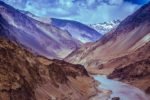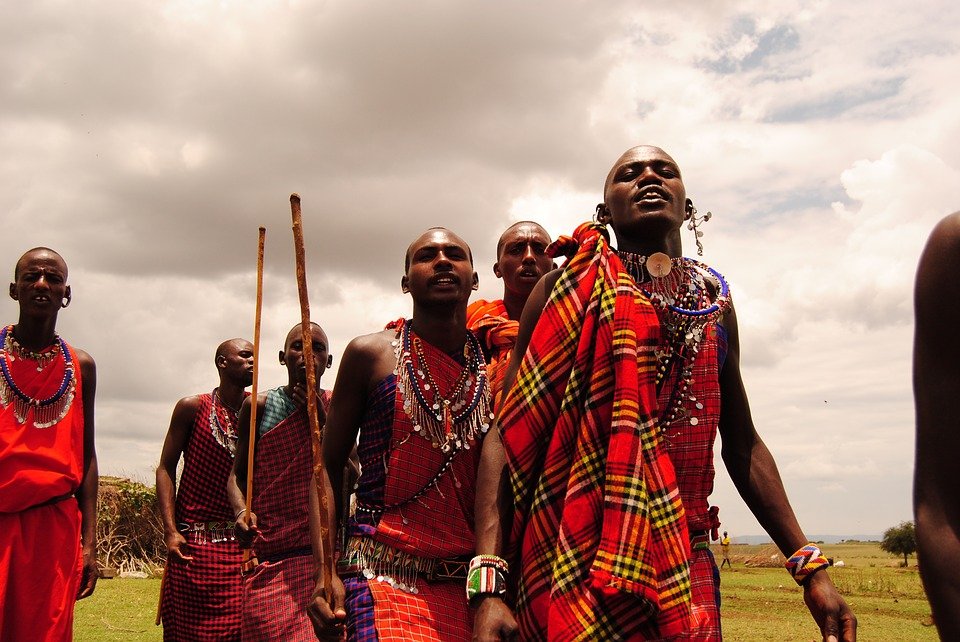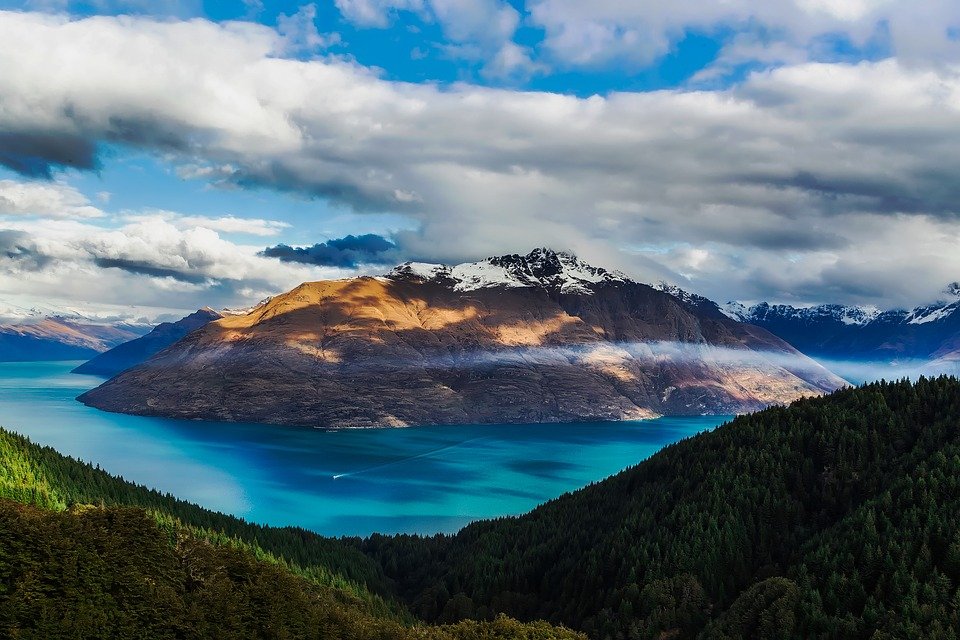Close your eyes. Imagine.
The start of winters. Morning. There is a little nip in the air, a bit of hanging fog. You are standing in a lawn, the grass underneath your feet has moist pure water on its blades; there is silence all around you, broken only by a cacophony of barbells. All around you, mighty brown, blue mountains arise – from nowhere to walls higher than 12000 ft. Bells chiming from a small temple atop a hill nearby. You can see a steeply dropping waterfall straight in front of you. And, beyond them, you can see the snow-capped peaks of the majestic Himalayas; peaks whose names you have heard in mythological stories growing up.
Open your eyes. How would you feel if all that you imagined is true. Alongwith a hot cup of tea in your hand; and your partner sitting beside you. This is the true definition of bliss. And bliss is what we had for 10 days in the Himalayas. This is its story.
More than half the world is enamoured by mountains, so it hardly is a surprise that we find ourselves drawn to them, every now and then. Since an exhausting Himalayan climb that I did this April, I was restless for more. So, when Homa brought up a suggestion of a vacation in the Himalayas, I was over the moon. She also brought up a twist – that this time we seek out spirituality in the mountains, search for places that are associated with positive energy, saints, meditation, and philosophy. The theory had a solid appeal, and so we embarked on our journey into the hills of Kumaon.
Corporate life meant we took a red-eye flight to New Delhi and an early morning train to a town in the foothills of Uttarakhand called Kathgodam (literally meant warehouse of wood). Our first halt of the day would be the Ashram of Neem Karoli Baba at Kainchi, a place near Nainital and ~2hours from Kathgodam.

Neem Karoli Baba was a renowned saint and worshipper of Lord Hanuman in the last century. There are legendary stories about him and his miracles, neatly detailed out in 3 thick books. Sometime in 1962, he visited this place and realized he had been here 20 years ago in 1942. He thought of settling down in that valley, seeking permission to build a small temple. The followership increased multi-fold, the center attracting devotees by thousands, turning into a large and comfortable temple complex an year after his death in 1973. There are no religious chants there, no rituals and hectoring. People visit to just sit, meditate, soak in the energy and plug back into the world. And so we sat, perhaps for the first time ever in such a direct manner to mass-meditate. And sit we did, for a good one hour not realizing how time flew. It was a very nice experience for me.
We had also made one more choice – that we will stay away from crowd and stay in places which give the same delights, but with fewer people around. So we neglected Nainital and drove straight to a little known village in the hills called Darmani to stay for the night. What a delightful decision this was, for the place was so awesome – be it the views, the food, the hosts, or the property.

Morning Yoga, morning coffee and a yummy Indian breakfast later, we hit the road for our next destination. After a brief pause at Neem Karoli Baba’s another ashram at Kakdi Ghat, we were looking to revisit the temple town of Jageshwar – a one street town beyond Almora, that is known for a rich temple complex of ~120 temples small and large, built between the 7th and 14th century by descendants of many rulers. It lies along a running river at the bottom of a valley, making it extremely green, rich in oxygen and atleast 4-5C cooler than neighbouring villages. The 2.5hr journey was pure bliss, except for the traffic congested town of Almora – a sad statistic for an otherwise handsome hill station discovered by the British.


Hills also bring out another dimension – food. Hill food is simple, delicious and available everywhere. Yet, with so many choices that spoils you, I was looking for a good combination of mesmerizing views and delectable food – which perhaps can be difficult. We spent more time looking for a good place than eating in a good place and so found ourselves getting delayed in reaching our destination for the night – an unknown town in the remote named Chaukori. The town has nothing to boast except a KMVN (Kumaon Mandal Vikas Nigam) guest house and since it was dark, we were only too happy to reach, check-in, have a warm bath, eat a lovely dinner and sneak into bed.
What Chaukori is, we found next morning, when thru the large glass walls, came in the first rays of the sun, illuminating a hundred snow peaks all around us, especially the Panchachuli – a string of 5 mountains steeped in Indian myths. It’s a town to stop time, sit and just gaze the might of the snow mountains.


We needed to leave though, cause our plan was to get as close to the Panchachuli as we can. And that happens in a remote town of Pithoragarh, a town named Munsiyari. The Panchachuli is a string of 5 mountains in the Indian side of Himalayas, very close to the Nepal and Tibet borders. Myth equates them to the 5 Pandavas of Mahabharata who ascended to heavens from this point. All of them are higher than 6200m, mostly unclimbed and look difficult to climb too.

Munsiyari is a cute little winding town strewn across a hillside. Its biggest assembly of people is in the town square that has 8 shops and 3 restaurants. I couldn’t find a bottle of deodorant in that market. A town that doesn’t have many basic luxuries though has the most majestic view of mountains from every house that it has. We were lucky that our hotel hosts gave us a grand view room on the topmost floor of their hotel (which is 2nd floor). Panchachuli just streamed right into our room as soon as threw open the curtains. And so it was from everywhere – from the Nanda Devi temple or the park or the roof top restaurant serving Maggi and coffee.


Munsiyari also has a little know secret. A medium difficulty hike up of 8km one side that brings you to zero point of Khaliya Top – Munsiyari’s highest point from where you get a 360 view of snow-capped majesties – Nanda Devi, Nandkot, Panchachuli as well as the Annapurna ranges in nearby Nepal. And so, early morning 7am, in our knit top walking shoes and empty bellied confidence, we walked against the breeze to reach the entry gate to Khaliya Top.
We walked, and walked, and walked some more, yet reached nowhere. It seemed like hours but was only an hour before we saw a KMVN lodge and some trekkers in tents. Overjoyed that we have nailed it, we spent a lavish time in ordering Maggi and tea, only to be disappointed when told that we are just halfway, and steeper sections await us. Thereafter with Maggi adding more to the gravitational pull on our bodies we huffed and puffed to the top where a huge 2km long grassy meadow greeted us with panoramic views and positive vibes. We were about to pose for victory selfies when our guide pointed us to another steep section – the zero point of Khaliya Top – that lay another 1.5km more (and perhaps 500ft higher). Zero point is a perfect lesson in philosophy. Happiness and struggle live side by side and one starts where the other ends. You need to embrace both to stay alive and feel purposeful. You also need strong lungs to stay alive while hiking up. Its only after such severe penance do Mountains Gods (like the Nanda Devi) see you eye to eye – at eye level. Khaliya Top felt like the playground of the Gods. Hope the pictures do justice to what we saw.

Munsiyari was as remote was we could go in our schedule. It was now time for our return, and we chose a little-known place called Binsar (over Almora). It was once the summer capital of Kumaon Kings – indicating its coolness and is also home to a lovely wildlife sanctuary with an amazing variety of birds. From the top of Binsar come into view the additional peaks of the range – Trishul, Shivling, Chaukhamba and Kedarnath I & II. It would be the longest drive of our trip – a straight 7 hours. We added some more to it by adding 2 more pit stops – the confluence town of Bageshwar and the temple town of Baijnath.
So we start, at 7am in the morning, descend down till Tejam from Munsiyari, then turn right to climb up along the Ramganga river to the beautiful village of Seli Sama, stop by the roadside to buy freshest oranges from a village boy who had plucked them this morning from his orchard, get down to the valley at Bamsera, continue to the busy town of Kapkot, finally landing into Bageshwar where a temple exists at the confluence of the rivers Sarayu and Gomti. Indian temple towns are always crowded, cow-dunged, bad drainaged congregations of faith. Thankfully, the temple was small, simple and easily accessible.
We were soon on the 30km road to Baijnath where a similar experience awaited us but for 2 differences. The temple was built around a pond that drained from the river Gomti, and that there were even fewer people in this 12th century temple complex. Where tourists drive by the thousands in the valley of Badrinath, just a handful of selfies clicking devotees in Baijnath do not indicate the unpopularity of Gods. Just the remoteness of the place. We were living high on our principles of this trip.


Fun fact is that Baijnath is just 16km away from a very touristy town of Kausani. A town that is immortalized by its poet laurate – Sumitranandan Pant. A town that was also dragged into history by Mahatma Gandhi who came here to spend 2 days and ended up staying 2 weeks and writing a super quick book on Yoga. And a town that now, drives Bengali tourists by trainloads every year. We bought local tea from the market (Kausani being the only town in Uttarakhand that has tea estates) and later realized that it is as ordinary as anything that is sold anywhere in India. The town’s highlight to me was the tea estate bungalow Gandhi stayed in during his time here and which was later converted into an Ashram by the government after independence. At this estate, one would probably see the largest expanse of the so-called 300km wide panoramic views of the Himalayan mountains.

With Kausani done, now was the time to head to our destination for the evening – Binsar. The Mahindra group bought up a British era colonial built 5-room property up a hill and soon made it their family vacation house, replete with log cabins made of Australian pine wood. It is at this property where we were to spend 2 nights – one of which would be the 2023 ODI cricket world cup final.

But before the match commenced, we had an important place to cover – Kasar Devi. And before I explain Kasar Devi, we need to talk about the Van Allen radiation belts. These belts (as many as 3 of them) are zones of energetic charged particles which originate from solar winds and are held captive by a planet’s magnetosphere. According to NASA, 3 prominent places on Earth witness the Van Allen belt passing through them – Stonehenge (UK), Machu Pichu (Peru) and yes, Kasar Devi (India). It is believed that such radiations lead to positive energy and a sense of purer air that is transformative to life. Call it cognitive bias, but I did feel cheerful all the way to Kasar and back. It’s a simple village with a small clean temple atop a hill with hardly anyone around. Look around and you will find some serious meditators quietly connecting to their inner selves. We spent around 3 hours just sitting there, meditating, talking, watching birds and gazing at skies. It indeed was peaceful.
Swami Vivekananda spent a good amount of time here, and set up a math – Sharada Math, just behind the Kasar Devi temple. We discovered it almost by accident and then were welcomed in by the inmates. We were allowed to sit and further meditate in the prayer hall which was very comfortably carpeted to ward off the cold. The windows of the hall let in the Himalayan views once again. Its easy to meditate in such tranquil settings even for a person at my level of consciousness. It was also a bit sublime to find a Bengali Math in the middle of Van Allen’s radiative ecstasy. Pure Joy Sunday.

The result of the match didn’t dampen my spirits though a lot less spirit got consumed at our resort by the guests. We spent our evening sitting well covered in our breezy log cabin balcony, sipping coffee and talking about the ways of the world. We were planning the next day, for it possibly would be the biggest spiritual day of the tour. We were to leave for Dwarahat the next day.

Before I introduce Dwarahat, let me introduce you to a superhero of our lives. He goes by the name of Mahavtar Babaji or Sri Guru – depending on which spiritual guru of present you talk to. Books after books have been written about him and still very little is known about him. I encourage you to read other books about him cause a blog post can’t do justice to his being. It is believed that Babaji shared the secrets of Kriya Yoga to Lahiri Mahashaya – the great great guru of Sri Paramhansa Yogananda of “autobiography of a yogi” fame – in a cave here near Dwarahat sometime in 1861. And so, it was on our itinerary and very eagerly awaited.
We started from Binsar, crossed Someshwar and then realized that the place is even beyond Dunagiri. The roads were all well and then ended abruptly. The last 2km were to a dirt road and even in that, the car couldn’t go beyond 500m. We stepped out, and a small non-descript board pointed out a trek path to the cave. 3 village houses, couple of cows and a handful of bamboo staffs (to help walkers) marked this milestone. An uphill trek of 1.5km with no one around, brought us to the newly constructed Babaji meditation center – which I later learnt was donated by veteran actor Rajnikanth. Still, no one around, we pressed further and in 5 mins were face to face with a very small 10×10 ft cave. Yogananda’s Yogoda Foundation had restored the cave but left it w/o any usual marks of rituals, symbols, idols or flags. A simple clean, cave, high enough and hidden in the Himalayas. All it had was a rubber carpet and a small lamp. And another human being who was already in deep meditation.

We quietly sat down, and I was surprised how long I could do that without any chills or aches. When we opened our eyes, we found the other individual had quietly left. We spent some more time wondering about 1861 when a common Indian married man serving on a civilian posting in British Army at Ranikhet (which is 3hrs drive from here) came here, met Babaji, got initiated into Kriya Yoga and started a followship that now counts thousands across the world.
Afternoon well spent, now 2 hungry souls and bodies sped past village after village to reach our hotel for the night at a place named Majkhali. Instead of staying over at Ranikhet – which I must admit, looked to me as very handsome town – we chose to stay a ridge higher and quieter than Ranikhet – which is Majkhali. 30 mins from Ranikhet, but clearer views of the majestic Trishul & Nanda Devi because of a lot less construction. Our rooms and restaurant offered spectacular views of the mountains and I just loved sitting in the restaurant, gazing at them, gulping sweet tea and just talking to myself. Later we went out for a good long 4km walk on the only street this town has, and even stopped by at their Ramleela (Indian mythology acted in a play form) ground where a show was on. Had sumptuous dinner, tucked into heated beds and snored the night away.


Last day of the tour and after breakfast, Ranikhet came too quickly as we sat in our car. A very pretty town, now also an army cantonment, so a bit of restrictions but then also a fine golf course and perfectly maintained lawns and law and order. I think, not sure, that it serves as the head quarters of the Kumaon regiment.
But we were on a different quest, and a few one-ways later, we were speeding to another legend of the hills – the Ashram of Haidakhan Baba. Babaji was another mystery of the hills. He appeared in 1970 in the village of Haidakhan – 30km away from Kathgodam in the foothills. He looked like a boy of 20 years. He spent 45 days meditating without moving at a cave in Kumaon Kailash and his followership rapidly bloomed as his miracles and teachings impacted lives of thousands of villagers. It is believed that he could be in many places at the same time, and there are several interesting stories about him. Then abruptly, he passed away in 1984. He had predicted his death, and his followers built a very modern temple complex in Ranikhet to his memory and teachings.
We waited for the main temple to open, which like Sharada Ashram or Babaji’s cave is more an enclosed hall with comfortable seating for meditation. No religious overtones, no shaman chanting. Interestingly, their temple had a corner for Mahavtar Babaji. That was perhaps the clincher for me.

As we then drove down the hills, all the way to Haldwani (we even made another stop at Kainchi Dham and revisited the Neem Karoli Baba Ashram), it occurred to me that spiritual quest is independent of religious identities and its more about the energy in yourself that needs to be modelled/channelled by you only. People who got it, perhaps also knew where they get it and who are the others who have had this experience, and so perhaps enjoyed in the company of those men and these hills.
The Himalayas inspire millions for no small reason.
Getting there: Kathgodam or Haldwani are the 2 most well-connected rail heads to get to Kumaon foothills. The airport at Pantnagar (34km from Kathgodam) also has weekly connections from major Indian cities. Thereafter, Kumaon hills are best explored in private taxis. Road network is mostly excellent and are being improved continuously.
When to go: Himalayan hills are best explored Oct – Dec (first half) and then Feb – Apr. Summer heat and direct sun rays, coupled with monsoon led land slides make a lot many months out of bounds.
Where to stay: Hills abound with all possible stay options, from ultra luxury to austere budget. Please contact us for suggestions and choices.
Like what you read. Find some more at: https://www.traveljaunts.in/travel-blog-posts/
























Very well detailed and I felt like travelling on this journey as I read through it. Loved it!!